Photo Courtesy of Toyota Gazoo Racing
After 19 long years, the World Rally Championship, fondly known as the Safari Rally, is back on Kenyan soil! Here is the scoop on the WRC Safari Rally 2021 dates, drivers, route, cars, and much more.
The Safari Rally was slotted to make a comeback in Kenya between 16th-19th July 2020. Unfortunately, it was postponed due to the COVID 19 pandemic. The WRC Safari Rally is now scheduled for 24th-27th June 2021, across Kenya’s scenic Great Rift Valley.
A Brief History of the Safari Rally in Kenya
The first Safari Rally was first held in Kenya on 1st June 1953 to celebrate the coronation of Queen Elizabeth the 2nd. Then, it was known as the East African Coronation Safari before being renamed The East African Safari Rally in 1960. The inaugural rally saw 57 drivers event transverse Kenya, Uganda, and the then Tanganyika. In 1974, it was renamed the Safari Rally and awarded a World Rally Championship status.
Sadly, in 2002, the World Racing Championship dropped the Safari Rally from its calendar due to security issues, poor organization, and finance constraints.
Consequently, it run as the KCB Safari Rally from 2003-2019, another period dominated by Kenyan wins.
In November 2017, Kenya Gazetted the Safari Rally Project and applied to return to the WRC. This request was granted, and an agreement between the Ministry of Sports, Culture and Heritage, FIA, and the WRC Promoter was signed in France. Consequently, FIA (Fédération Internationale de l’Automobile) returned the Kenya Safari Rally to the World Rally Championship calendar in 2019.
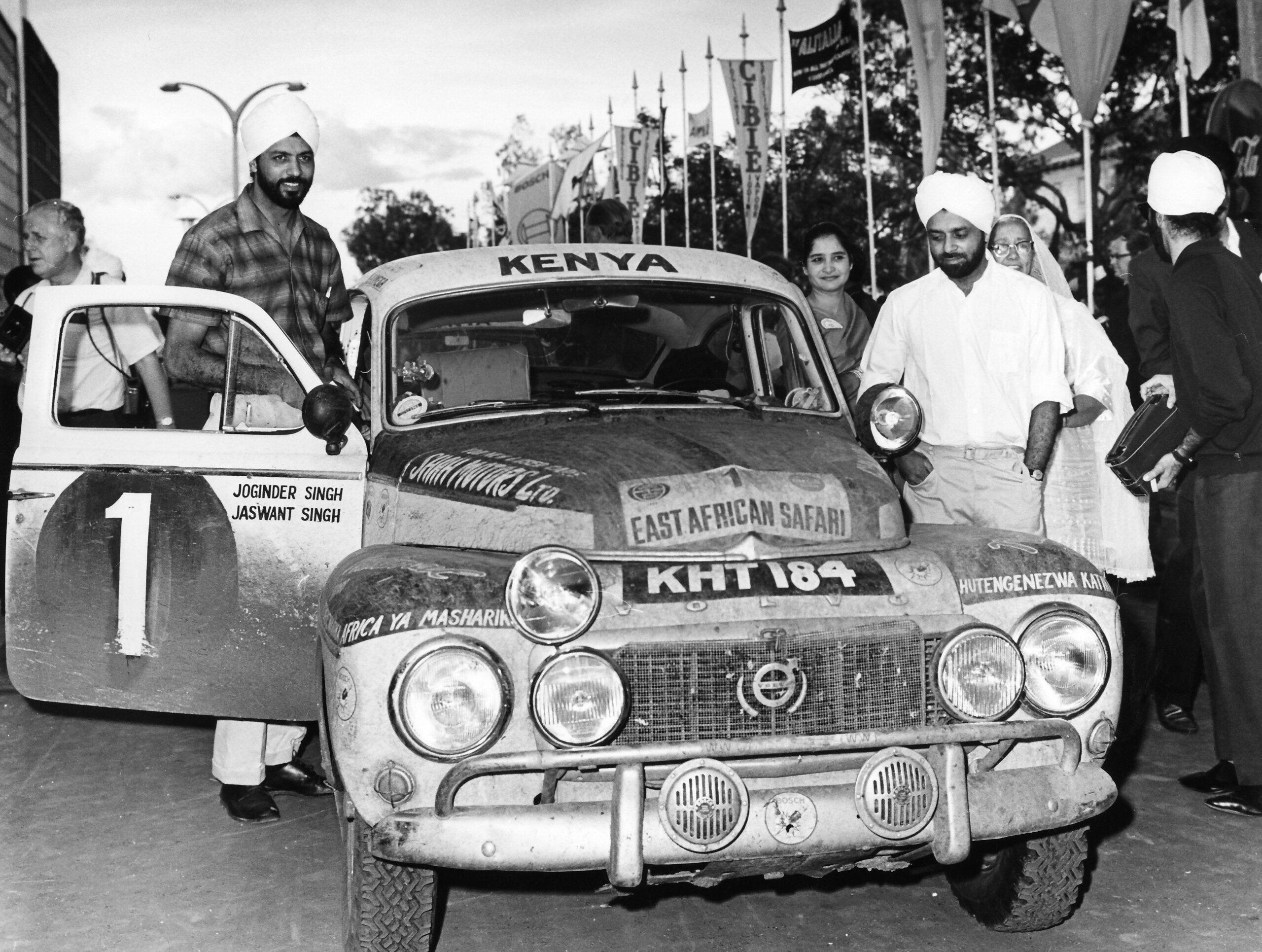
Joginder Singh, and his brother Jaswant win the 1965 Safari Rally in a Volvo PV 544. Photo Courtesy Volvocars.com
WRC Safari Rally Kenya Route & Itinerary- Where to Catch the Action!
Kenya will host the 2021 World Rally Championship between 24th-27th June 2021.
This adventure of a lifetime will see the world’s best rally drivers transverse Kenya’s beautiful Rift Valley, from Lake Naivasha to Lake Elementaita, with the grand finish at the iconic Hell’s Gate National Park.
The official service park for the rally will be the KWS Training Institute in Naivasha. This year’s race will be a throw down between 58 cars in 18 special stages and 320.19KM of competitive distance.
Safari Rally 2021 Route & Itinerary
Here is everything you need to know about the routes, times and itinerary for the 2021 Safari Rally:
Monday 21st June 2021- Administrative checks & reconnaissance
The Safari Rally drivers will conduct administrative checks at the KWS Training Institute in Naivasha in the morning hours. At 11 am, they will begin reconnaissance which will continue until the afternoon of 23rd June.
What is reconnaissance? –Reconnaissance is when rally drivers run through the racecourse (using a standard car) and prepare pace notes to guide them during the actual race. During recce, the driver calls out the road conditions, turns, bumps, etc., while the co-driver writes them down. They then refer to these notes when racing.
Wait- they can do that?
Reconnaissance is an internationally accepted practice, and the WRC allows it. In the past, it was not allowed, and in most cases, the rally routes were kept secret to the last minute. The drivers had to rely entirely on maps to guide them.
Some rallies prepare what is called ‘route notes’ in place of recce. These notes give the drivers an idea of the course that they will run.
Wednesday 23rd June 2021
From 1 pm, the Safari Rally drivers will conduct shakedown within the breathtaking Ndulele Conservancy. The shakedown route will be 5.10km long and is open to all drivers but compulsory for priority one drivers.
Way ahead of you……
Shakedown is when the rally drivers test their race cars in a terrain similar to that of the race before the actual race. Competitors must drive through the shakedown route at least three times with their passes timed.
After the shakedown the race cars will be transported via lorries to Nairobi.
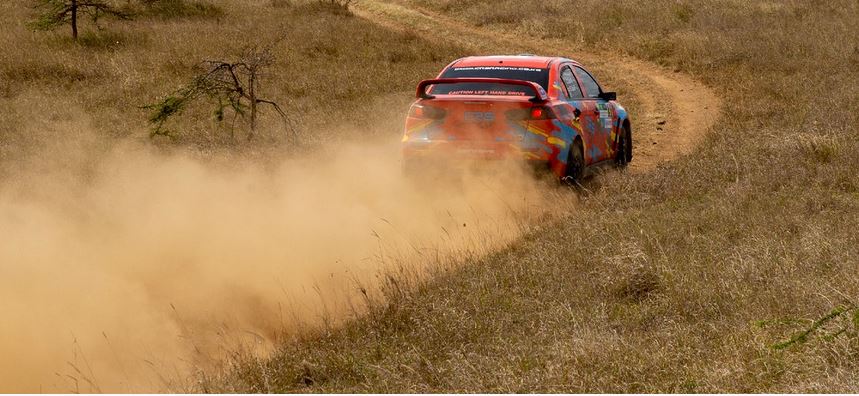
Photo Courtesy: Geoff Mayes/ Dirtfish
Thursday, 24th June 2021
7:30 am– The competitors will conduct reconnaissance at the Kasarani Spectator Stage 1.
11:00 am– The race cars will arrive at the Kenyatta International Conference Center (KICC) for a press conference and a ceremonial start.
12:46 pm – H.E President Uhuru Kenyatta will flag off the cars.
SS1- 2:08 pm- After 19 years, the Safari Rally will take place in Kenya when the rally drivers take on the first Leg at the specially built super stage at Kasarani. After this section, they will head straight to KWS Naivasha via A104.
1st Leg Friday 25th June 2021- Safari Rally 2021 starts in earnest with the special stages
What are special stages (SS)?
Special stages are the competitive sections of the rally. These stages are of a set length, and rally drivers must drive through each in the quickest time possible. In a special stage, each competitor starts at a set time. The special stages may be on public or private roads. Where they fall on public roads, the roads are closed when the rally is in progress. In some cases, the special stages are linked by public roads, and in these instances, the drivers must observe all traffic rules.
SS2- Chui Lodge: 8.20AM, 13.34Km
The 1st Leg of the Safari Rally will start at the Oserengoni Wildlife Conservancy with the 13.34Km long Chui Lodge stretch.
SS3- Kedong 9:05AM, 32.68Km
Kedong is not new to hosting the safari rally, having hosted it for years. However, the course has a new layout for this year’s rally with two large spectator areas- one at the Lake and the other adjacent to Longonot.
SS4- Oserian 1- 10:18AM, 18.87Km
Oserian is quite different from the Chui Lodge stage with a different surface and dense vegetation.
SS5-Chui Lodge 2 13:46 Pm, 13.34Km
This stage will be a repeat of SS2 in the Oserengoni Wildlife Conservancy.
SS6- Kedong 2 14:42Pm, 32.68Km
Kedong is not new to hosting the safari rally, having hosted it for years. However, the course has a new layout for this year’s rally with two large spectator areas- one at the Lake and the other adjacent to Longonot.
SS7-Oserian 2 15:55 pm, 18.87Km
The competitors will be back to the dense vegetation at Oserian for the last stage of the day. The crew will be allowed 45 minutes of car service at KWS Naivasha to prepare for the next day’s race.
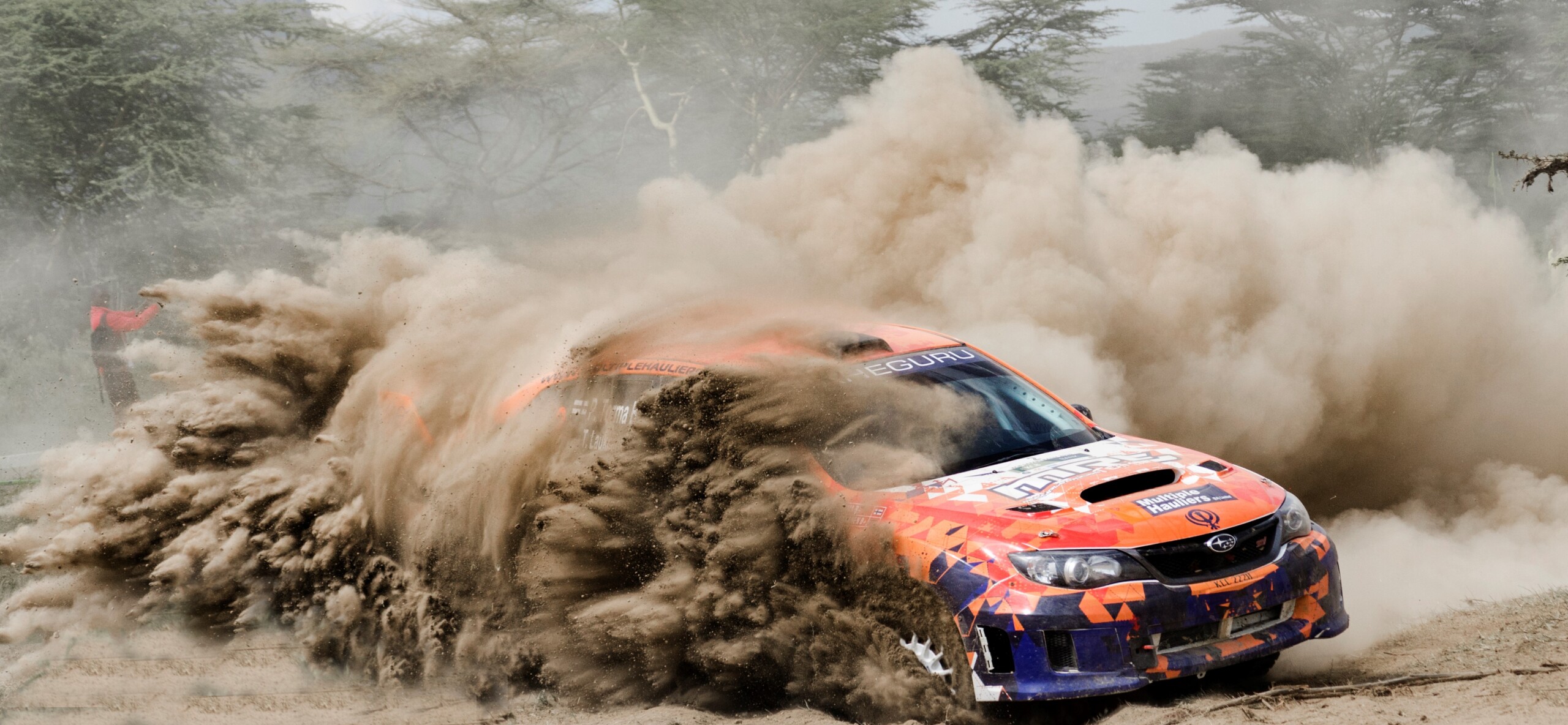
2nd Leg Saturday 26th June 2021
SS8- Elementaita 1, 8:08AM, 14.67Km
This part of the race will take the race drivers to the Soysambu Conservancy in the Delamere Estate, a popular rally track with a few new sections.
SS9 Soysambu 1, 9:08 am, 20.33Km
This will be the WRC Live TV stage. It will feature a large spectator and hospitality area, giving people a chance to get up close with the race cars. The spectator areas will be at the beginning and end areas of the race.
SS10 Sleeping Warrior 1 10:22AM, 31.04Km
This will be the longest stage of the day and will see the race will see the drivers crisscross the Sleeping Warrior plains. The drivers will have a tough time navigating the rocky surface laden with coarse lava.
SS11 Elementaita 2 14:05Pm, 14.67KM
This stage is a repeat of SS8, which will take the race drivers to the Soysambu Conservancy in the Delamere Estate.
SS12 Soysambu 2 15:08 Pm, 20.33Km
This will be the WRC Live TV stage. It will feature a large spectator and hospitality area, giving people a chance to get up close with the race cars. There will be a spectator area at the beginning of the race and at the end.
SS13 Sleeping Warrior 2 16:22Pm, 31.04Km
Another long stretch that will wind up the 132.08Km Leg. Crews will be allowed 45 minutes of car service at Naivasha KWS.
3rd Leg Sunday, 27th June 2021
SS14 Loldia 17:56 Am, 11.33Km
This stage will take the competitors to a wooded forest area with narrow sections similar to the safari rally of old.
SS15 Hell’s Gate 1 8:38 am, 10.56KM
The competitors will race at the iconic Hell’s Gate National Park
SS16 Malewa 10:45 am, 9.71Km
This will be challenging, rocky, and hilly with sharp 90 degree turns, compounded by the loose surface. Drivers will have the challenge of preserving their tires for the final power stage.
SS17- Loldia 2 11.25 –11.33kms
A repeat of the forested area with narrow sections similar to the safari rally of old.
SS18 Hell’s Gate 2 13:18 Pm, 11.33kms (Power Stage)
This is the power stage of the rally (final stage), and it will be in the breathtaking background of the scenic Hell’s Gate National Park. The finish line will be at the iconic Ficher’s Tower, giving spectators amazing views of the fight to the finish line.
WRC Safari Rally Kenya 2021 Top Drivers & Cars
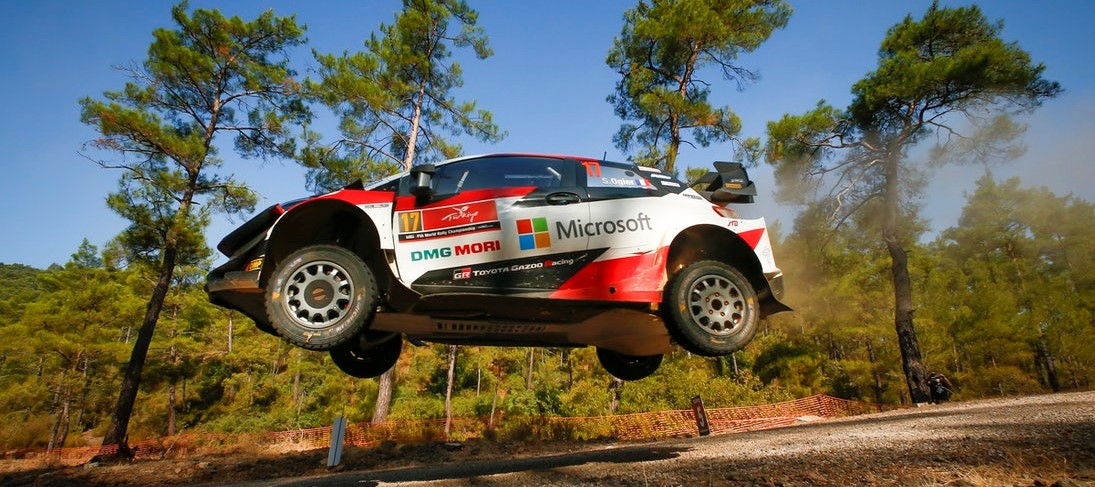
WRC Champion Sebastien Ogier flies high at the Rally Italia in this photo. He is expected to lead the pack at the Kenya Safari Rally 2021. Photo courtesy Toyota Gazoo Racing.
The 2021 Safari Rally has attracted top crews from the World Rallying Championship, including WRC 2, WRC3, and private entries. Leading the pack is recent WRC Italia Rally Sardegna Champion Sebastien Ogier and Julien Ingrassia in a Toyota Yaris.

Top 2021 Rally Drivers. Info courtesy of Wikipedia
The race will have an unprecedented 34 Kenyan entrants, including:

Some of the Kenyan drivers at the 2021 Safari Rally. Info courtesy of Wikipedia.
How did the idea of the Kenya Safari Rally come about? A Look at its History
The Safari Rally was the brainchild of Eric Cecil (1919-2010). Cecil was a car race enthusiast and the then chairman of the Competition Committee of the East African Automobile Association (EAAA). The story goes that in 1952, he was having a drink in Limuru with Neil Vincent, his cousin, and Eric Tomp, a friend.
They started discussing motorsports, including the racing track at Lunga Lunga in Nakuru. Vincent was an avid racer, having competed in the Nairobi-Johannesburg Road Race in October 1936. When asked why he never raced in Nakuru, he answered that he was not interested in ‘going round in circles’ on a racetrack. He, however, was open to a ‘race across Africa and back’ where the first driver would be declared the winner.
Cecil, the consummate racer, couldn’t stop thinking about it and came up with different racing ideas. Most were immediately discarded due to their perceived difficulty. Yet, he needed to come up with something that would truly test man and machine. Unfortunately, when he approached the EAAA with the idea of a rally, he was promptly dismissed as having ‘crazy cowboy ideas.’
As fate would have it, in 1952, the then Princess Elizabeth was staying at the Treetops Lodge in Nyeri when she received news of her father’s death. This immediately elevated her to Queen. Cecil took advantage of this situation and requested the EAAA to allow motoring enthusiasts to mark the coronation with a ‘long distance event’. The EAAA relented, given that Kenya was a British Colony and such an event would be of importance.
However, Cecil did not officially receive any financial support but managed to secure sponsorship from the East African Standard Newspaper and Shell Oil. The race was 5,160km long and took place between 27th May and 1st June 1953. The first Leg was between Nairobi- Morogoro – (Tanganyika) – Nairobi, while the second Leg was between Nairobi- Kampala-Nairobi.
Out of the 57 drivers who started the race, only 15 managed to finish.
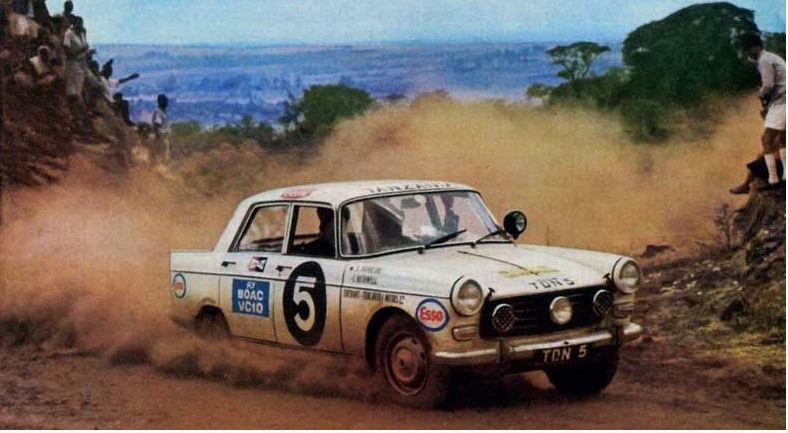
Bert Shankland of Tanzania driving a Peugeot 404. He won in 1966/67. Photo courtesy www.safarirally.co.ke
The Safari Rally Grows in Earnest
After the inaugural Coronation Safari Rally, word started spreading among motor enthusiasts about the ‘toughest rally in the world.’ The race began getting media attention, notably when a team of British motorists joined in 1959. In 1960, it was filmed for British Television, and this gave it much prominence.
When it received international status, it started attracting manufacturer teams from all over the world. While VW Beetle dominated the race in the 50s, other makers such as Ford, Peugeot, and Mercedes joined the fray in the 60s.
Now renamed the East African Safari, for 14 years, the rally took place between Kenya, Uganda, and Tanzania. For close to two decades, the international drivers returned home empty-handed as local drivers stole the show each time. This changed in 1972 when Finnish Hannu Mikkola and Gunnal Palm lifted the trophy in a Ford Escort RS1600.
Kenya’s Most Popular Safari Rally Drivers
Kenyans, and indeed East Africans, remember the Safari Rally with nostalgia. Each Easter holiday bought the spectators out to watch the rally cars roar by. Given that April is a long rain season in Kenya, the rally drivers had to contend with heavy rain and muddy roads.
Things got exciting, particularly when Kenyan drivers such as Shekha Mehta, Joginder Singh, Vic Preston, Patrick Njiru, and Ian Duncan roared by. Joginder Singh first won the race in 1965 in a Volvo PV 544. He then won twice again in 1974 and 1976 in a Mitsubishi Lancer 1600 GSR. Shekha Meta first won his Safari Rally in 1973 in a Datsun 240Z, but things got to fever pitch after winning four times in a row, between 1979-1982.
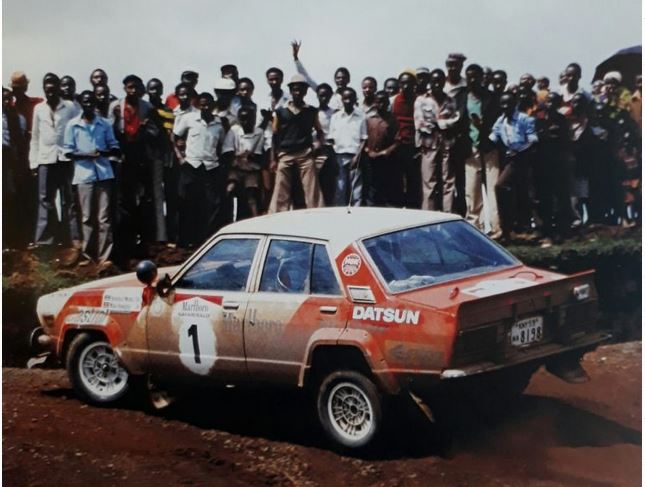
Shekha Mehta won the Safari Rally a record four times in a row. Photo courtesy www.safarirally.co.ke
Unfortunately, after Shekha Meta’s last win in 1984, Kenya, which had dominated the race for years, would go without a win for the next 11 years until Ian Duncan and David Williamson lifted the trophy in 1994. In the same year, Patrick Njiru and Abdul Sidi came in 4th, the highest ever ranking for an indigenous Kenyan driver. Even then, spectators were treated to exciting times from popular names such as Juha Kankunnen, Bjorn Waldegard, Tommi Mackinnen, and Carloz Sainz.
The end of an Era
The Safari Rally has undergone significant changes since its birth in 1953. In 1973, Uganda was experiencing political turmoil occasioned by a military coup, so it pulled out. By 1974, the relationship between Tanzania and Kenya had become frosty, and Tanzania dropped out. The rally was then renamed the Kenya Safari Rally.
Sadly, in 2002, the World Racing Championship dropped the Safari Rally from its list due to security issues, poor organization, and finance constraints.
Consequently, it run as the KCB Safari Rally from 2003-2019, another period dominated by Kenyan wins.
2021 is the year that changes it all as the World Rally Championship makes a comeback on Kenyan soil from 23rd-27th June 2021.

A comprehensive and enjoyable read! Reading this made me nostalgic. I remember the April holiday treats when the Rally drivers raced past our otherwise sleepy villages to the delight of locals. The safari rally tales were told weeks later. I wrote a number of compositions inspired by this event. Bravo, Croton Motors fir this piece 👏👌.
Thank you Jackie for your encouraging comments! we are glad the article brought back some great memories of old.
Hahaha! The East African Safari Rally event still rings in my ears many years after it was gone. Speed demon Aaltonen, Woldegaard, Tricky Kankunen/Mehta. I loved the roaring sounds tearing into the night and we could stand there and just enjoy a few seconds pleasure of seeing the cars zoom by – sometimes we could hardly read the vehicles numbers!
Hi peter, you are right, the Safari Rally brings wonderful memories indeed. Are you planning to catch it this year?
Wow! A very nice article
Hi Simon, we are glad you took the time to read and comment. Let us know if there are any other vehicle topics you would like to read about!